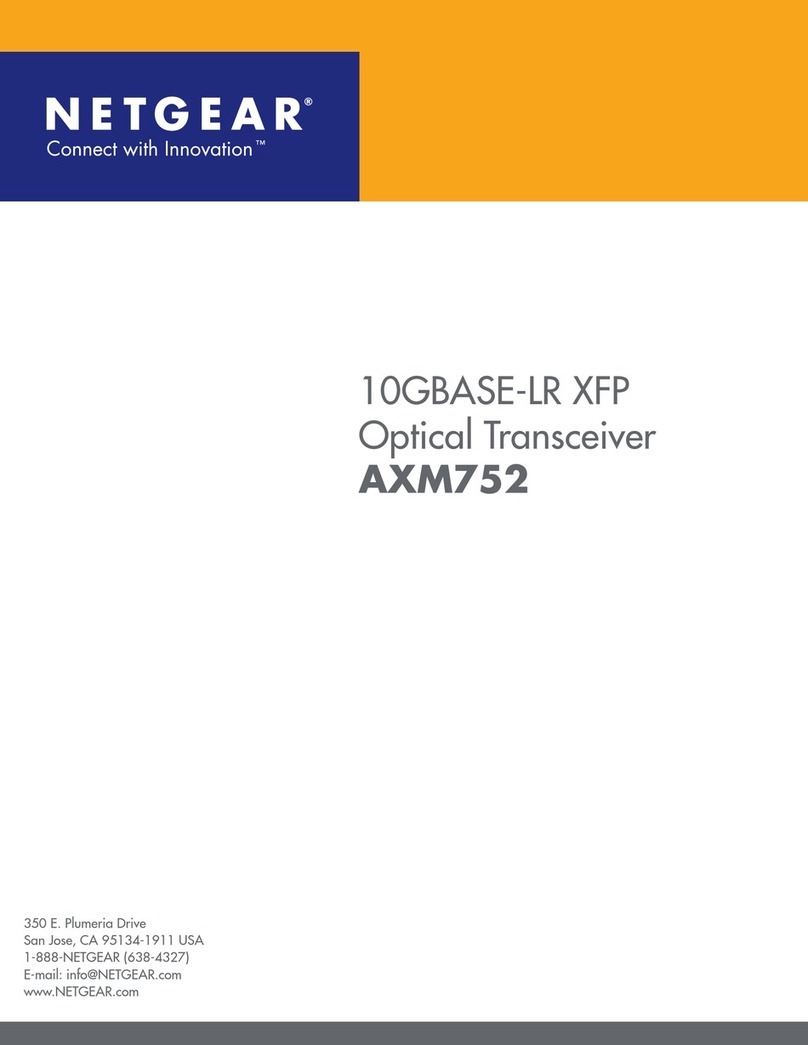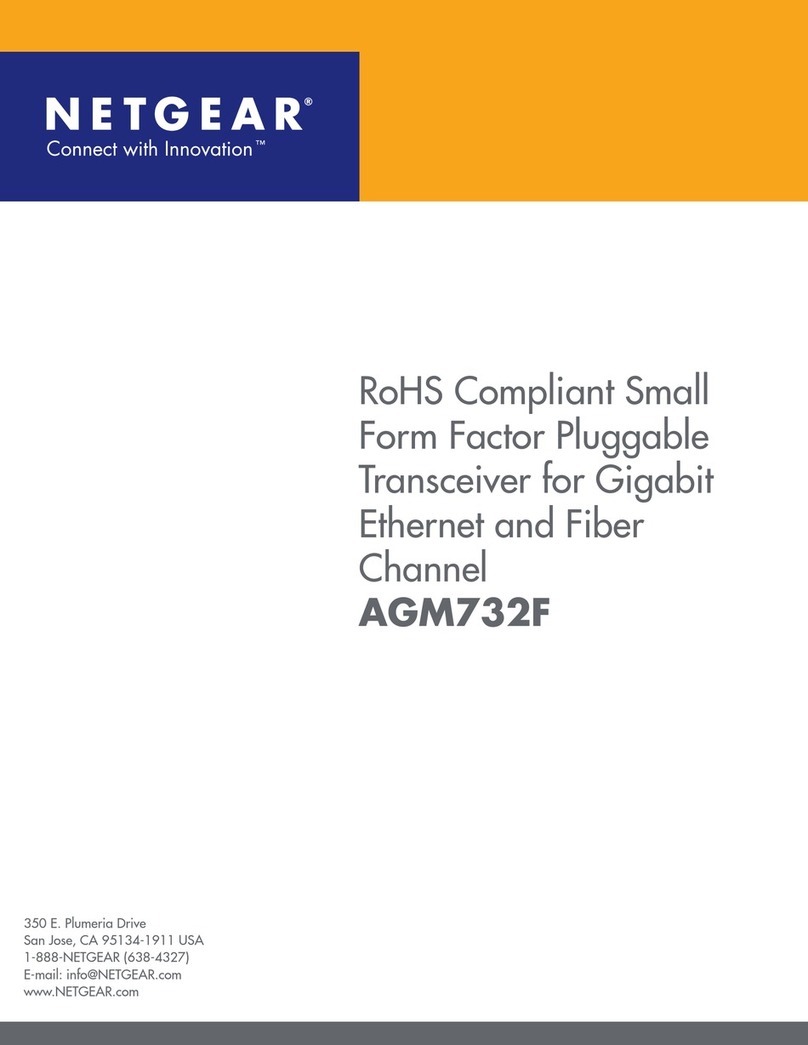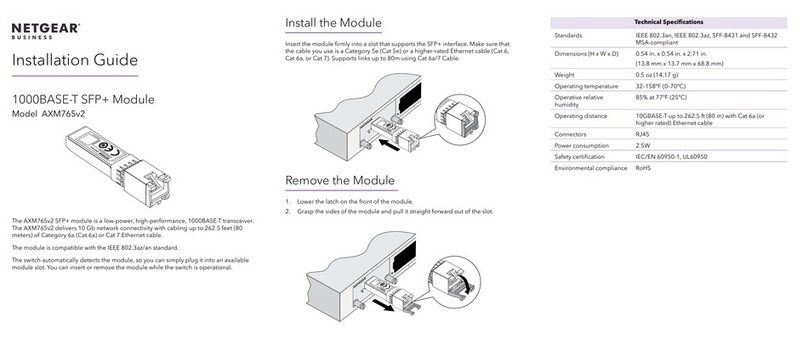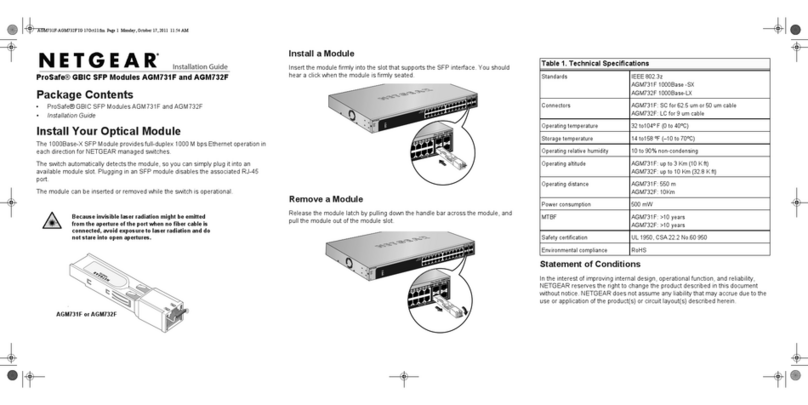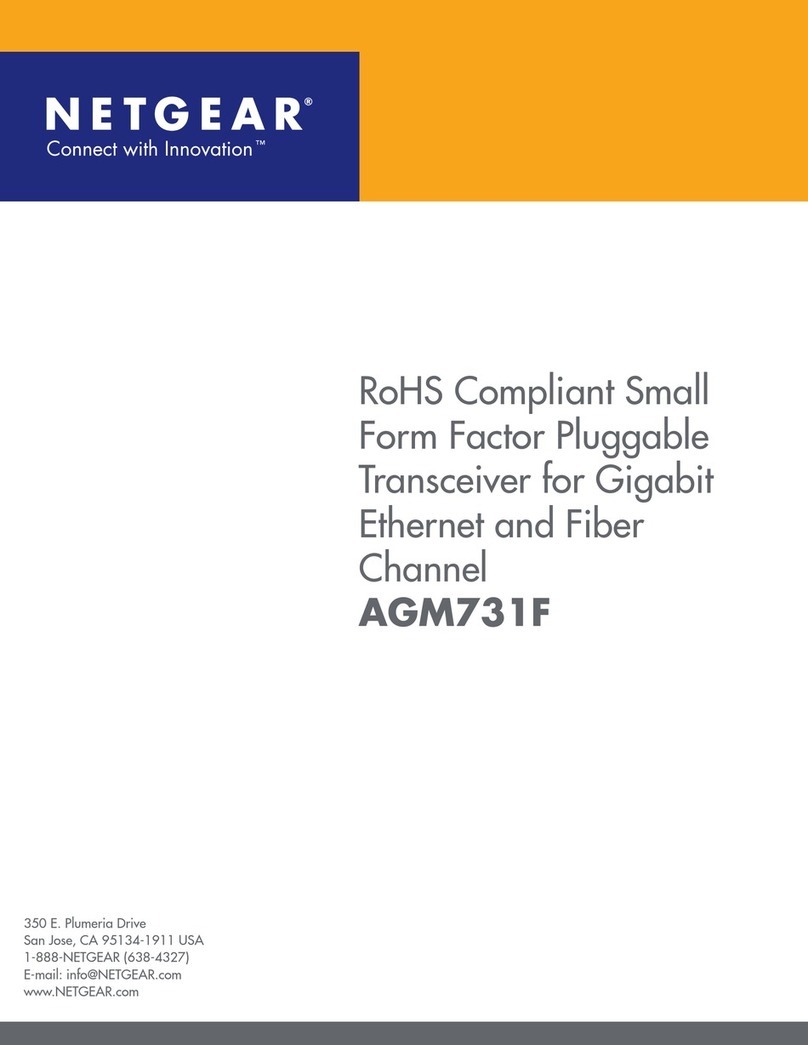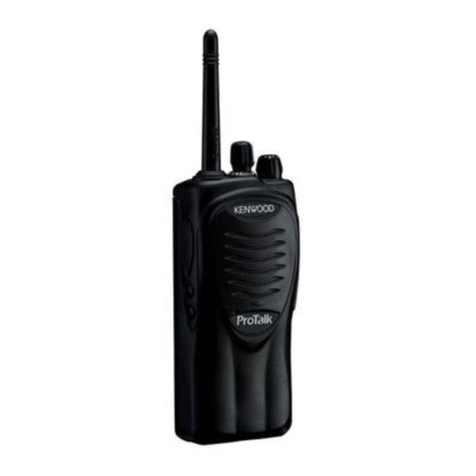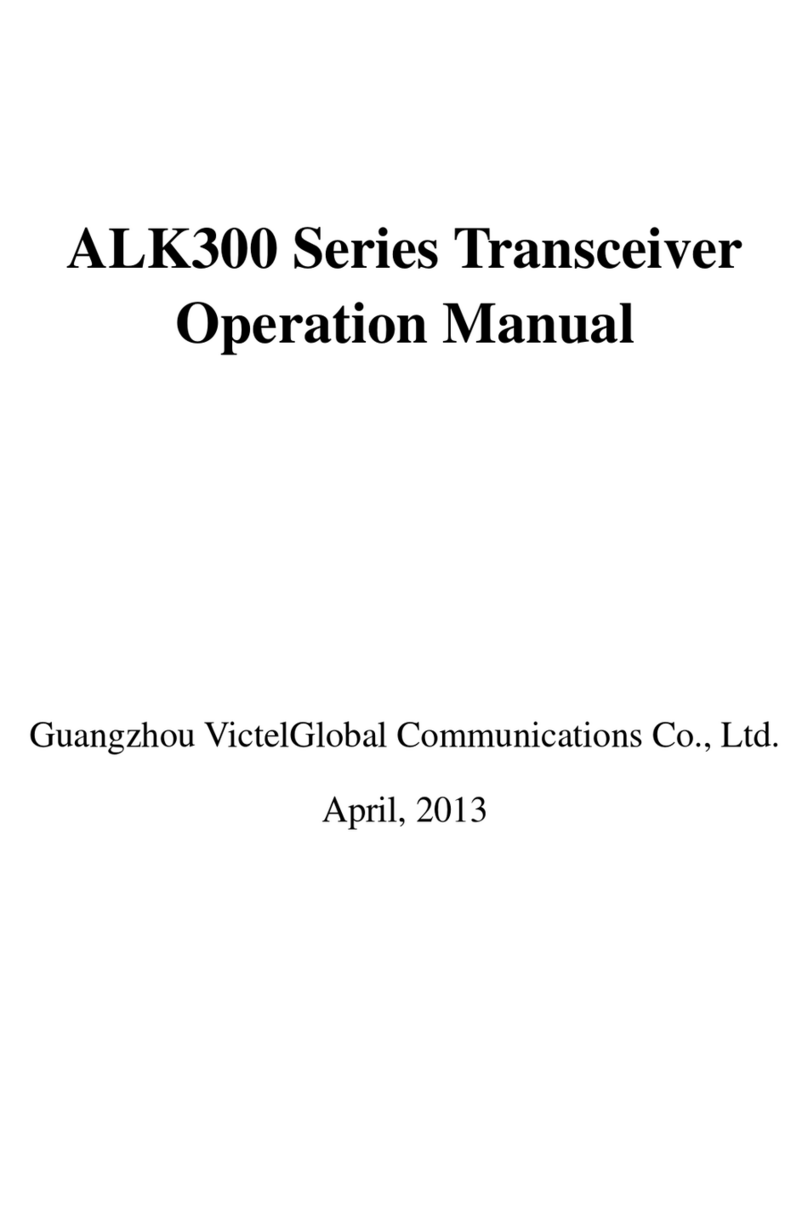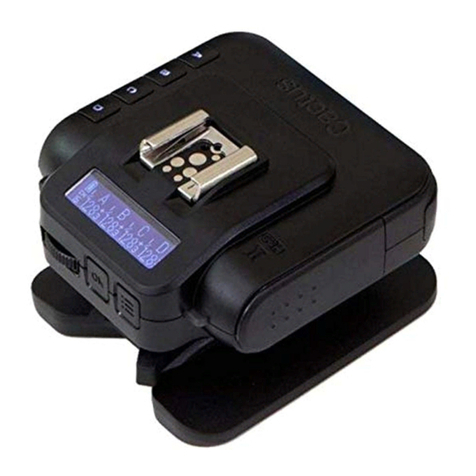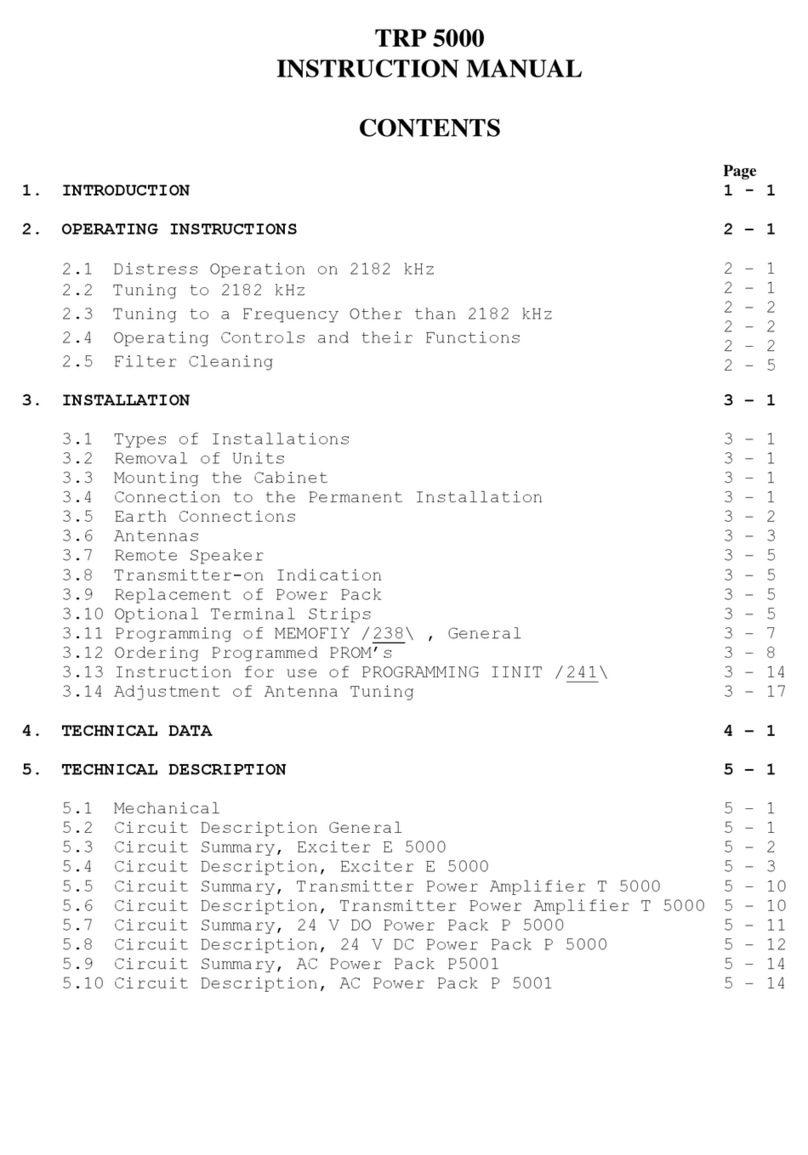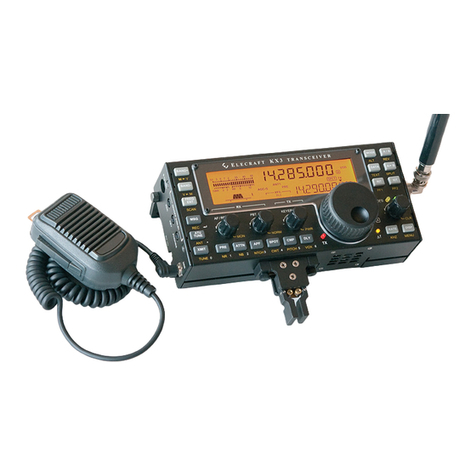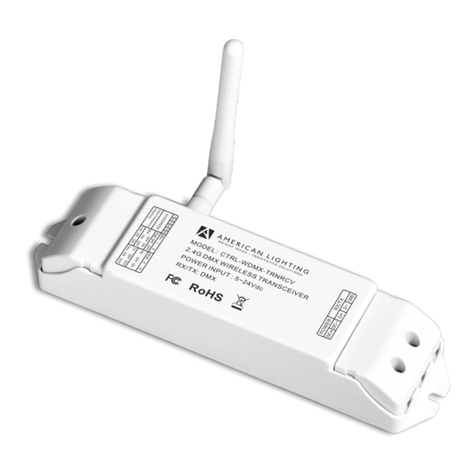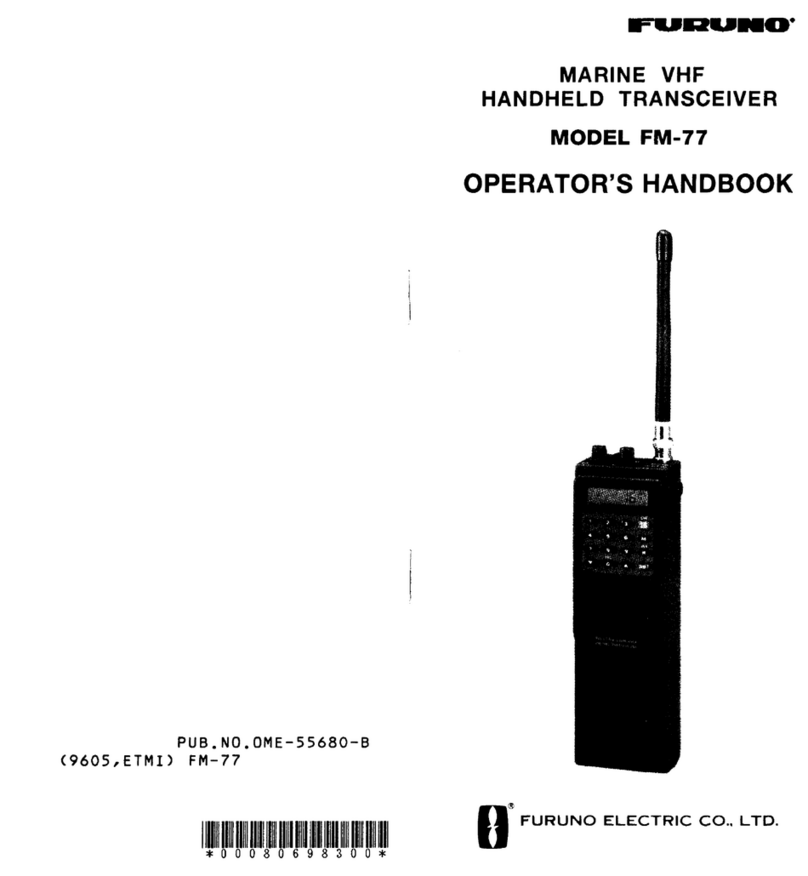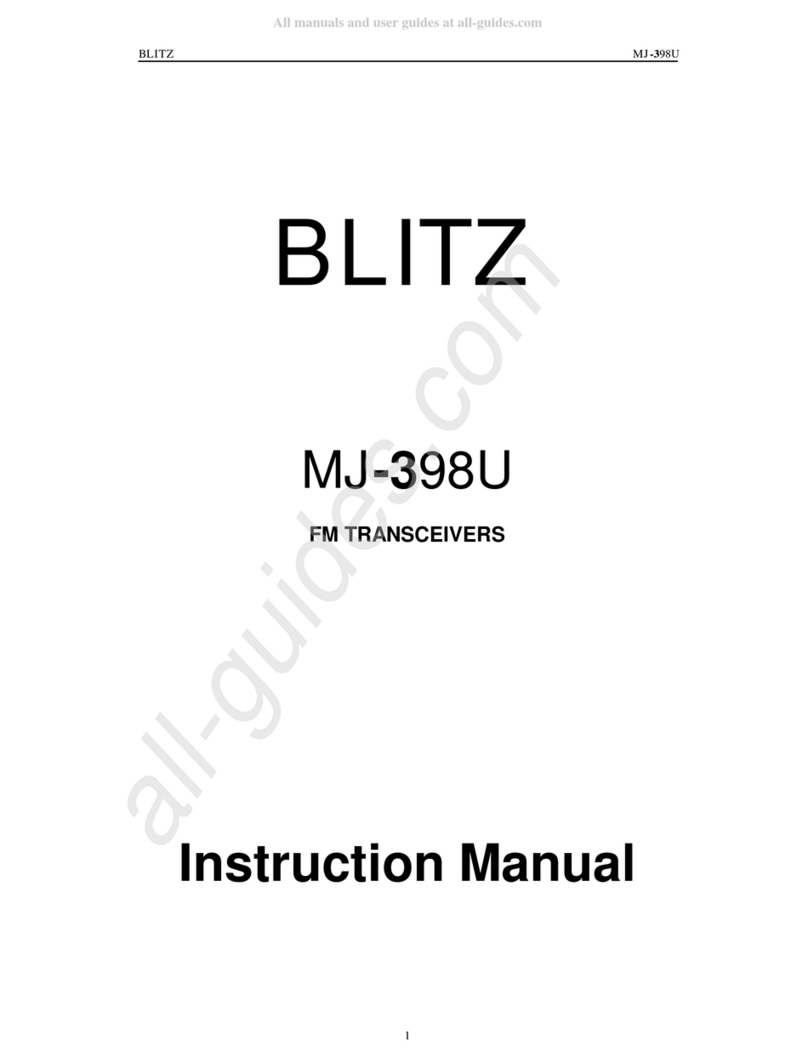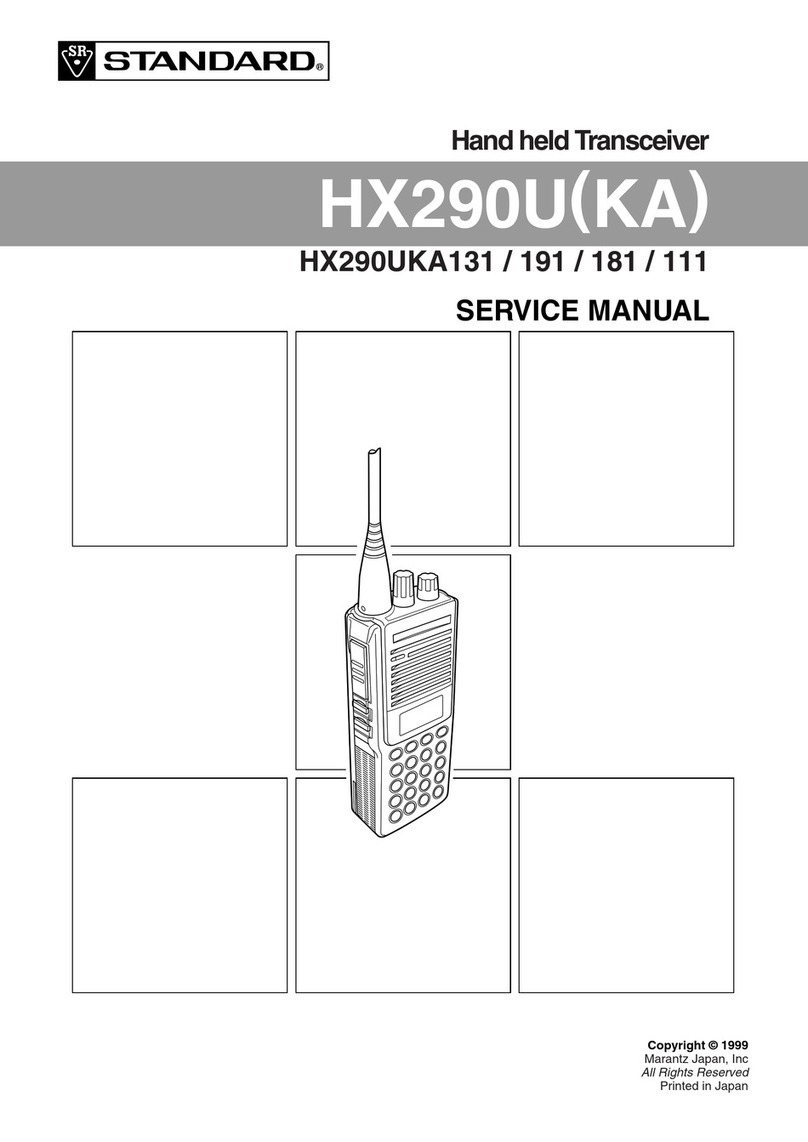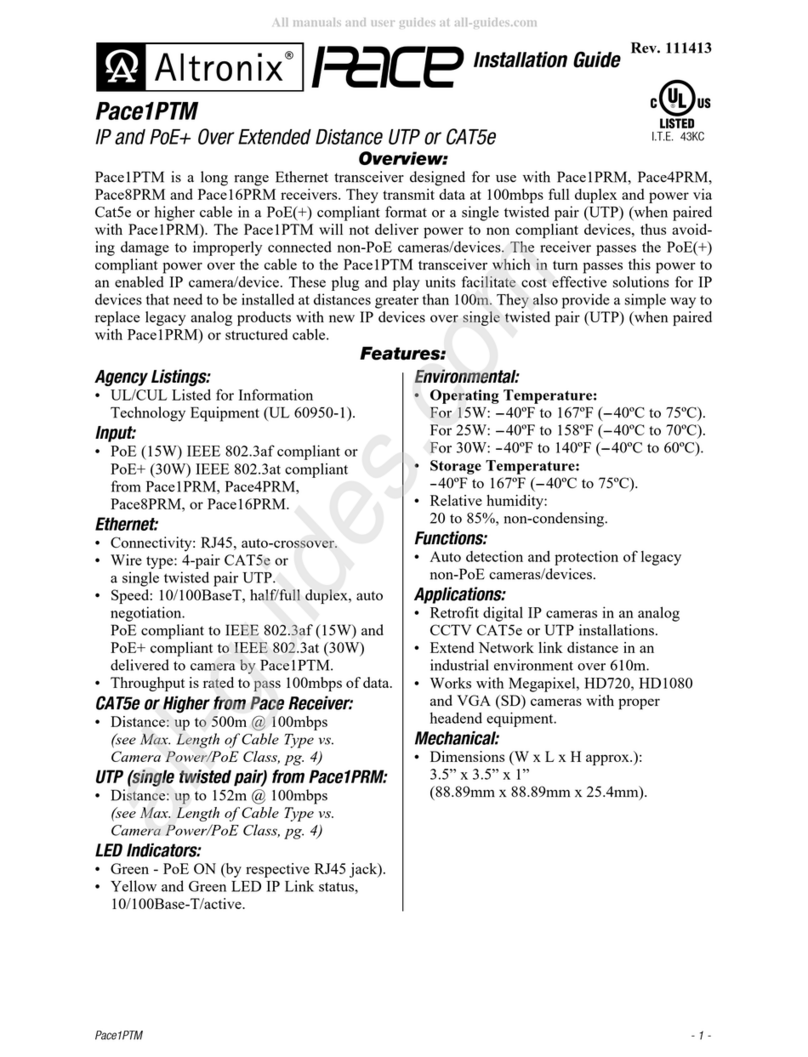7. L w Speed Electrical Hardware Pins
In addition to the 2-wire serial interface the XFP module has the following low speed pins for control and status:
‧ Mod_NR
‧ Mod_DeSel
‧ Interrupt
‧ TX_DIS
‧ Mod_ABS
‧ RX_ os
‧ P_Down/RST.
1 MOD_NR
The Mod_NR is an output pin that when High, indicates that the module has detected a condition that renders
transmitter and or receiver data invalid, shall consist of logical OR of the following signals:
‧ Transmit Signal Conditioner oss of ock
‧ Transmitter aser Fault
‧ Receiver Signal Conditioner oss of ock
2 MOD_DESEL
The Mod_DeSel is an input pin. When held ow by the host, the module responds to 2-wire serial communication
commands. The Mod_DeSel allows the use of multiple XFP modules on a single 2-wire interface bus.
When the Mod_DeSel pin is “High”, the module shall not respond to or acknowledge any 2-wire interface
communication from the host. Mod_DeSel pin must be pulled to VCC3 in the module.
In order to avoid conflicts, the host system shall not attempt 2-wire interface communications within the Mod_DeSel
assert time after any XFP modules are deselected. Similarly, the host must wait at least for the period of the
Mod_DeSel deassert time before communicating with the newly selected module. The assertion and de-assertion
periods of different modules may overlap as long as the above timing requirements are met.
3 INTERRUPT
Interrupt is an output pin. When “ow”, indicates possible module operational fault or a status critical to the host
system. The Interrupt pin is an open collector output and must be pulled up to Host_Vcc the host board.
4 TX_DIS
TX_DIS is an input pin. When TX_DIS is asserted High, the XFP module transmitter output must be turned off. The
TX_DIS pin must be pulled up to VCC3 in the XFP module.
5 MOD_ABS
Mod_ABS is pulled up to Host_Vcc on the host board and grounded in the XFP module. Mod_ABS is then asserted
“High” when the XFP module is physically absent from a host slot.
6 RX_LOS
The RX_ OS when High indicates insufficient optical power for reliable signal reception. The RX_ OS pin is an open
collector output and must be pulled up to Host_Vcc on the host board.
